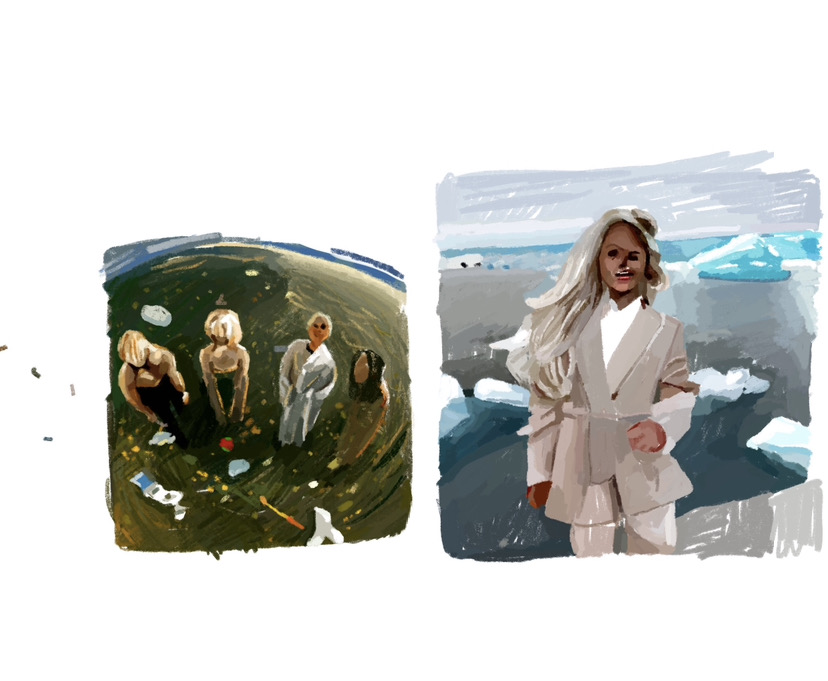Featured illustration: Georgia Harmey
We all like to think we’re doing the most for our planet. Whether that’s reducing our purchases, shopping second-hand or making do and mending what we have, making more sustainable choices is certainly on our radar.
And we’re not alone. According to the World Economic Forum, 70% of people aged 16-25 are “extremely worried or very worried about the climate”.
As the world of fashion becomes increasingly more sustainable, including some of our favourite and well-known brands, consumers are ready to say goodbye to plastic bags and irresponsible sourcing of materials.
At face value, most brands seem to be on board with this environmentally conscious vision, but how much of this is true? Just last summer, high street chain H&M came under fire when a report by Quartz revealed the brand was misleading customers about the sustainability of their products.
The Manchester-born brand Boohoo was not excluded from this controversy either, when the Competition and Markets Authority opened an investigation in July about their eco-friendly claims that also involved retailers ASOS and George at Asda.
Being a responsible consumer can feel harder than ever when we’re faced with so much greenwashing and false marketing. That’s why we’ve rounded up five top tips below to help you spot (and avoid) greenwashing.
1. Read the labels
Have a look at the labels. If they contain over-exaggerated phrases such as ‘shop this look and save the planet’ they could be misleading you. Do your research to check they have the proof to back up these claims.
2. Be mindful of the collection size
Look at how big a brand’s sustainable collection is. If a brand really wants to be sustainable, their collection’s size should reflect this. If something is mass-produced, it’s less likely to be environmentally friendly.
3. Understand sustainability is about more than just the environment
If a brand focuses too much on how the product was made without information on the factory workers’ living conditions or wages, this may be a sign that the fashion label isn’t taking into account all aspects of production. A fully sustainable brand will have a holistic approach that includes both environmental and labour factors..
4. Filter out those not-so-special special features
Just because a brand labels something as a feature, doesn’t mean it’s sustainable. a product boasts about not containing an illegal toxin, they’re doing the bare minimum by following industry standards, which doesn’t make them more environmentally friendly than their competitors.
5. Watch out for buzzwords
Watch out for buzzwords that aren’t clearly defined or backed-up with facts. Words like eco-friendly” and “sustainably made” are meaningless unless we know what percentage of the garment is actually made with recycled materials. And erms like “natural” and “organic” are ambiguous and don’t fall under any legal standards, so they can often be used to trick consumers into thinking they are buying an eco-friendly product. Always have a look on the brand’s website and read the small print!
It’s easy to be tricked into thinking that we’re shopping at sustainable brands and doing our part for the environment but taking that extra time to research before purchasing can prevent you from falling for these greenwashing scams, so you can support the labels who really care about the environment and welfare of their workers.






Leave a reply